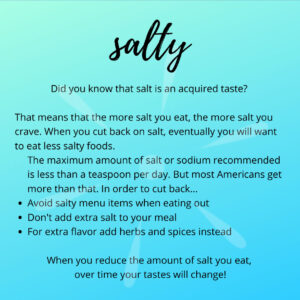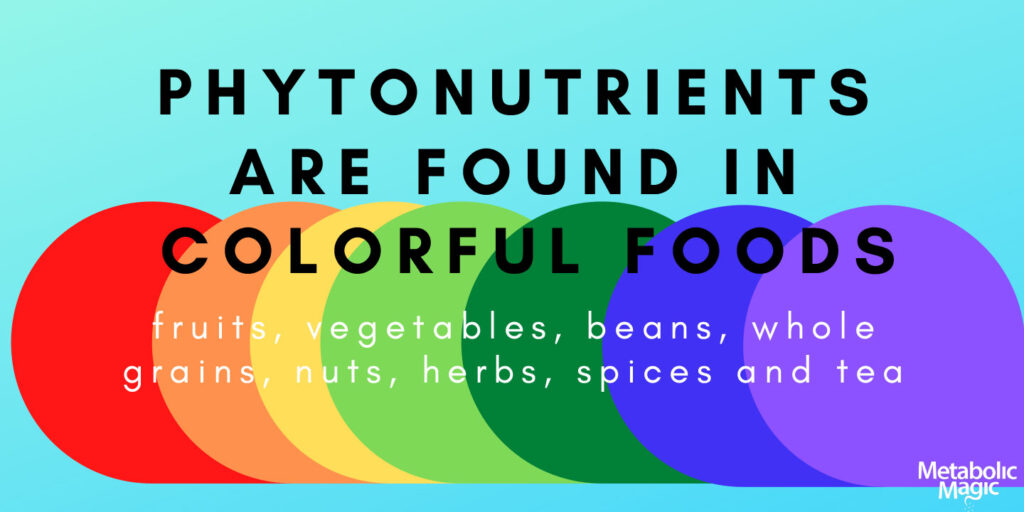Micronutrients in Depth
Micronutrients
in a nutshell

The first micronutrient is vitamins. Vitamins come in either fat-soluble or water-soluble depending on how they are absorbed into the body. Fat‑soluble vitamins include A, D, E and K and require a little fat in your diet to be absorbed and stored in your body. Water-soluble vitamins include vitamin C at the B-complex vitamins.
Micronutrients also include minerals. These are nutrients that come from the earth, either in the form of plants (who absorb it from the ground) or animals (who eat food containing minerals). Minerals not only help with body processes, but they also give your body structure. For example, calcium makes your bones and teeth strong. But it does not work alone…you also need vitamin D and magnesium so that the calcium can be absorbed.
Minerals also combine in other important ways. The three minerals sodium, chloride and potassium, also called electrolytes, are necessary for maintaining the fluid in your body.
The third category is phytonutrients, which comes from plant sources. Foods with lots of phytonutrients are often very colorful and provide your body with many health benefits such as preventing disease, strengthening your immune system, and other ways of supporting your body to maintain optimal health.
Many phytonutrients also act as antioxidants. Antioxidants are substances that slow damage to your cells caused by oxidation, helping to protect against disease and slow aging processes.
While these three micronutrients (vitamins, minerals and phytonutrients) come in small doses in your food, the health benefits are immense!

Introduction
There are three main classes of nutrients: fluids, macronutrients and micronutrients. All three include essential nutrients, that is, the nutrients that keep our bodies alive and healthy. Fluid, or water is essential to life and we need a constant supply for our body to operate. Macronutrients, like carbs, protein and fats, are needed in large amounts and provide you with energy. Micronutrients, on the other hand, are only needed in very small amounts and do not provide you with energy. Instead, they assist in making body processes happen. Micronutrients include vitamins, minerals and phytonutrients (plant-derived nutrients).
Why are micronutrients important?
Micronutrients are key to all of your body’s processes. Unlike carbs, fat and protein, they do not provide energy directly, but instead partner with other substances in important ways. Micronutrients are co-enzymes, or molecules that work with other enzymes in order to help them do their job. In other words, everyday processes such as maintaining cells and tissue or using the energy from food all rely on micronutrients!
While you only need very small amounts of micronutrients, not enough or too much can cause problems in your body. If you do not get enough of a certain micronutrient, it could lead to a deficiency disease or poor health. For example, not enough calcium, Vitamin D or magnesium (which helps you absorb calcium) could make your bones weak, leading to fractures or breaks. Vitamin B12 deficiencies in adolescents can cause changes in cognitive or brain function. Micronutrients are found in most of the foods we eat, and consuming a variety of foods should provide you with the range and appropriate amounts of vitamins, minerals and phytonutrients..
Vitamins
Vitamins come in two categories: fat-soluble and water-soluble, (depending on how they are carried throughout the body).
Fat-soluble vitamins need fat to be used in the body. They attach to the fat and are carried through the bloodstream. Because they are attached to fat, they can also be stored in the body to be used later, so we do not need to consume them everyday. Fat-soluble vitamins include Vitamins A, D, E, K and carotenoids. They are found in foods with a higher fat content such as meats, fish, nuts, vegetable oils and avocados. Carotenoids are found in fruits and vegetables with orange, yellow and red colors such as carrots, tomatoes or sweet potatoes.
Water-soluble vitamins dissolve in water and are carried within the fluids in your body. When you eat foods with these vitamins, they are easily absorbed into your bloodstream and then taken to whichever cells need them. When you consume an excess of these vitamins, your kidneys will filter them and they will be flushed out through your urine. Water-soluble vitamins include Vitamin C and the B-complex vitamins. B-complex describes a family of vitamins: thiamin (B1), riboflavin (B2), niacin (B3), pantothenic acid (B5), Pyridoxine (B6), biotin (B7), folate (B9), and cobalamin (B12). Water-soluble vitamins can be found in foods such as whole grains, fruits, vegetables, dairy products and meat.
Minerals
Minerals are another micronutrient necessary to maintaining and growing a healthy body. Similar to vitamins, minerals help manage bodily processes and build structure. During adolescence there is major growth and development; Minerals are essential for these processes.
Minerals do lots of other things like make your muscles contract, or regulate the energy used in your organs and cells. Let’s look at two minerals that are critical for your health as you grow. Calcium is essential for growing strong bones and helping you reach your maximum potential height. Minerals are not only found in your bones and teeth, but they also make up your body’s tissue, muscles and blood. Have you ever held your breath under water and felt the urgency to come up for a breath? Well, that is how the rest of your body feels when it is deprived of iron. Iron is necessary to make hemoglobin, a major component in blood that carries oxygen to all parts of your body. Iron is especially important during adolescence when your body is rapidly growing. Certain foods have high amounts of these minerals; Calcium is found in dairy products such as milk or cheese, while higher amounts of iron are found in meat, spinach and pumpkin seeds.
Minerals come in two categories called major minerals and trace minerals.
Major minerals are needed in large amounts. Some examples are calcium, phosphorus and magnesium. Calcium and phosphorus make up most of your bones and teeth. Magnesium helps your body absorb calcium. Low levels of these minerals put a person at risk for osteoporosis.
Trace minerals are found in smaller amounts…less than 20 milligrams a day are needed for each one. Some examples are fluoride, iron and selenium. The fluoride in your toothpaste keeps your teeth strong and helps prevent cavities. Iron is a component of your blood and helps carry oxygen from your lungs to all the cells in your body. Selenium is another necessary trace mineral, one that can work as an antioxidant, helping prevent cell damage.
Just like other nutrients, your body needs these micronutrients in adequate amounts to maintain a healthy body.
Salt and Electrolytes
You may have heard that salt can be bad for your health, but in fact it is an essential nutrient, necessary for life. When you think of salt you probably picture the salt on your table or salt sprinkled on food. This table salt is actually made of two minerals, sodium and chloride. Salt helps to regulate body fluids, maintain a normal blood pressure and even helps your muscles relax.
Besides sodium and chloride, another mineral, potassium, is also essential to body functions. These three minerals work together to maintain the fluids in your body; they are called electrolytes. Electrolytes conduct electrical currents in your body which control muscle activity and fluid balance, or the movement of fluid in and out of cells. Moving fluid in and out of cells carries both nutrients and waste, similar to digestion. Although this process can be seen as simple, it is crucial to keeping your body alive and functioning.
You may have noticed that after eating something very salty you will feel thirsty. When you ingest too much sodium, your body has a way of regulating itself and getting rid of excess sodium. Your kidneys will help process that extra sodium and pass it through your urine. When you urinate more you will feel thirsty because you have lost more fluids. Your body can regulate itself to an extent through these processes, but too much salt can still harm you. Excess salt in your diet can cause issues with kidneys and raise blood pressure which can lead to other diseases. In a typical American diet, the only mineral that is over-consumed is salt.
Phytonutrients
Another category of micronutrients is phytonutrients. These are plant-based substances, similar to vitamins and minerals. Plants produce these chemicals naturally to protect themselves, and these protective chemicals can be passed along to us when we eat plants! Phytonutrients are often found in the very colorful foods: fruits, vegetables, beans, whole grains, nuts, herbs, spices and tea. Some phytonutrients can only be found in specific foods or they need to be eaten together in order to provide benefits. For example, combining the spices turmeric and black pepper, could help your body absorb the nutrients in these foods and therefore enhance their effects.
Antioxidants
While we know phytonutrients have many health benefits, we are still discovering more. We know that they work as antioxidents, strengthen your immune system, protect against cardiovascular disease, osteoporosis, urinary tract infections, and some cancers. Although there is no recommended daily amount, a good rule is the more colorful your plate of food, the more phytonutrients it will have.
Conclusion
While micronutrients such as vitamins, minerals and phytonutrients are only needed in small doses, they are crucial for maintaining your body. Some of the vitamins and minerals are essential, meaning your body cannot function without them. It is important to make sure you get enough of all the required vitamins and minerals, as well as the phytonutrients that prevent disease and help your body function better. Now that you know some of the foods that contain these micronutrients, you can incorporate them into your diet more easily. Remember, the more colorful and varied the food you are eating, the more vitamins, minerals and phytonutrients there will be to provide you with the things your body needs to stay healthy!
Resources
- Bourre, J.M., (2006). Effects of nutrients (in food) on the structure and function of the nervous system: update on dietary requirements for brain. Part 1: micronutrients. The Journal of Nutrition Health and Aging. Sept-Oct; 10(5): 377-385.
- Bronson Merki, M., Merki, D., (2001). Glencoe Health, A Guide to Wellness, 7th Ed. New York, NY: Glencoe McGraw-Hill.
- Drake, V. Et al, (2017). Micronutrient inadequacies in the U.S. population: An overview. Linus Pauling Institute, Oregon State University.
- Duyff, R., (2017). ADA Complete Food and Nutrition Guide, 5th Edition. Boston, MA /New York, NY: Houghton Mifflin Harcourt.
- Goodson, A., (2018). Why turmeric and black pepper is a powerful combination. Retrieved from: www.Healthline.com.
- Solan, M., (2019). The best foods for vitamins and minerals. Retrieved from: Health.Harvard.edu.
- The Institute for Functional Medicine, (2015). The Phytonutrient Spectrum: Comprehensive Guide.
- Jacobs, A., (2013). A little known nutrient can make a big difference in heart and bone health. Today’s Dietician, 15(54).
- Mareng, K., (2019). Vitamin K2: suctions, sources, benefits, deficiency. Retrieved from www.MedNewsToday.com
- National Institutes of Health, Office of Dietary Supplements. Fact Sheets on various micronutrients. Retrieved from: www.ods.od.nih.gov
- Rettner, R., (2018). Why you can’t skip the magnesium if you’re taking Vitamin D. Retrieved from www.LiveScience.com
- Rinzler, C., (2016). Nutrition for Dummies, 6th Ed. Hoboken, New Jersey: John Wiley & Sons, Inc.
- Spritzler, Franziska (2019, June 7). How many carbs should you eat if you have diabetes?.
- Thompson, J., Manore, M., Vaughan, L., (2014). The Science of Nutrition, 3rd Ed. Boston: Pearson Publishing, Inc.




